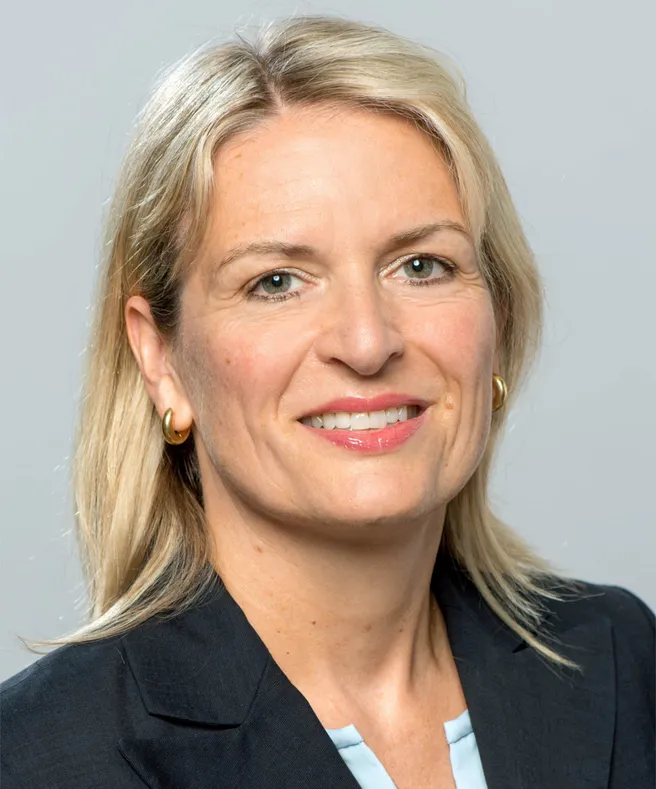Globally, more than half of cervical cancer cases occur in women over the age of 50. Despite global screening efforts, some countries show stagnating or even rising incidence rates in this high-burden age group. In some of the most affected regions, screening programmes are non-existent or limited and are only recommended up to the age of 50, although older women have a higher mortality rate from cervical cancer. Reliable data on the prevalence of human papillomavirus (HPV), which is considered to be the main cause of cervical cancer and its precursors, is largely lacking in this group. Previous analyses have mainly focused on younger women or women with normal cytology.
Addressing this research gap, a new study led by Professor Dr. Stefanie J. Klug, head of the Chair of Epidemiology, investigates the global HPV prevalence in women aged 50 and older with abnormal cytology. The research team, including epidemiology research associate Vanesa Osmani, published its findings under the title "Worldwide burden of cervical human papillomavirus (HPV) in women over 50 years with abnormal cytology: a systematic review and meta-analysis" in the international journal BMJ Global Health, which currently has an impact factor of 7.1.
Prof Klug explains: ‘Following the outstanding publication in the journal Lancet Microbe, this is the second excellent publication on global HPV prevalence in women over 50 as part of Vanesa Osmani's doctoral thesis. She was able to show how high HPV prevalence is in older women with cell changes in the cervix in some countries. The results underline that preventive measures with an HPV test, as called for by the World Health Organisation, could prevent many invasive cases of cervical cancer.’
According to Osmani, the aim of the study was to understand why the incidence rate in older women is comparatively high: ‘How can we explain the high rates of cervical cancer in this age group? HPV is the causative factor and we wanted to carry out further research into this,’ she explains. The focus was on women with abnormal cytology, i.e. those with detected cell changes (cervical lesion) in the cervix, as a higher HPV prevalence was to be expected here. ‘We wanted to know: How high is this prevalence actually in women with abnormal cytology?’
The research reviewed studies published up to the end of April 2024, focusing in particular on the HPV prevalence by cervical lesions, age-specific prevalence, and the prevalence of different HPV types. Among women over 50 with abnormal cytological findings, 54.5% were HPV-positive, including 43% with high-risk HPV. Notably, HPV types 16, 52, and 53 were the most prevalent types.
A key finding is that HPV prevalence is highly dependent on the severity of the cervical lesion and the geographical region. Osmani explains: ‘HPV prevalence was highest in Africa - compared to Europe and North America.’ The differences could be related to access to screening measures and therefore the timing of cytological examinations. In African countries, lesions are often only detected at a later stage, whereas in Europe, screening programmes usually detect early changes, says Osmani.
This highlights once again the importance of screening programs — particularly in countries with limited access to preventive healthcare. “Many women up to age of 49 have never been screened, whether due to financial barriers or lack of available services. That poses a major challenge,” Osmani emphasizes.
The findings clearly show that women in this age group carry a high disease burden, have thus far benefited little from HPV vaccination programs, and are frequently overlooked in both research and policy. Osmani stresses that for heavily affected regions like India and sub-Saharan Africa, there is still a significant lack of reliable data. “This severely hampers research — we urgently need more studies to develop effective interventions.”
Based on these findings, the research team recommends targeted screening strategies for older women: “HPV testing is more sensitive than cytology, but access to the necessary technology and the associated costs remain major hurdles. There should be a focus on women over 50, especially in countries with low vaccination coverage, as this group has a particularly high risk and has largely been neglected until now.”
Link to the Chair of Epidemiology website
Contact:
Univ.-Prof. Dr. Stefanie J. Klug, MPH
Ordinaria
Chair of Epidemiology
Am Olympiacampus 11
D-80809 München
Tel.: 089 289 24951
e-mail: stefanie.klug(at)tum.de
Vanesa Osmani
Chair of Epidemiology
TUM Campus im Olympiapark
Am Olympiacampus 11
80809 München
e-mail: vanesa.osmani(at)tum.de
Text: Jasmin Schol
Photos: Pixabay/Private


